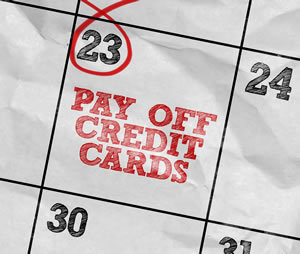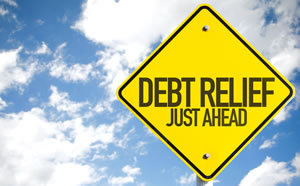Welcome to our site! Our editors have been covering the credit and debit card space for a total of 30+ years and we are proud to have been featured by the Wall Street Journal, CNN, etc.
Your input is invaluable and we’d love to have your opinion as to which cash rebate credit card is top rated (please read consumer reviews of Which Debit Card Gives the Best Cash Back Rebate & Rewards at the bottom of this page and post your own opinion) – this site is powered by you!
Consumer Note! Please be careful when comparing cash reward credit cards and bonus offers offers online- almost all sites ONLY list credit cards or debit cards that advertise with them (75%+ of our card offers don’t pay us a dime) and a result some of the best offers are not listed on these sites (see below). 🙁
Part of the beauty of credit cards and debit cards is their ability to give you rewards. Of course, the rewards only really mean something if you use the cards wisely.
Please Note! The Reviews Below are for 2016- Please Click Here for our Latest 2020 Reviews of Cash Rewards Credit Cards and To Apply Online in Just Mins. (Includes Application Links)(Sponsor Link and Sponsor Ad Below)
Unfortunately, while cash rebate credit and debit cards have grown in popularity, so has the confusion that surrounds them. Some programs change their rules often. Some provide higher rewards for some purchases but not others (and then they change the categories every quarter). Some cards have restrictions that others don’t.
The point is this: Not all cash back credit cards and debit cards are created equal. And not every card is going to fit your lifestyle, purchases or financial goals. That’s why it’s important to do your research before signing up for any cash back card. Once you have your card, then it is important to maximize your earnings potential. Visit this link for more detailed reviews where you can easily apply online:
This is part one of a two part article. Click here for part two. And click here for tips on how to maximize your cash back rewards.
Here’s our roundup of some of the best cash back cards for 2016 (click here for our current 2020 reviews and to apply online in just mins. (Sponsor Link), but note Citibank Double Cash (see below) is still our overall favorite cashback card in 2019 and Alliant is still our fav for heavy spenders). Also, please see below for the debit card that gives the highest cash rewards or rebates for small purchase amounts that we are aware of.
Also, please note that the Chime Bank debit card still gives the highest annual cash rebate referral that we are are of– $50 for you if you tell a friend or family member about Chime and they sign up (click to sign up online in 2 mins for more details) and $50 for you when they do. You can earn up to $500 per year in referral bonuses. (Referral Link)
Debit Card Which Gives the Best CashBack Rebate (Spring 2020)?
USAA Cashback Rewards Checking Debit Card (Non Advertiser):
Best For Small Purchases:
Please note that you must have a military affiliation to join USAA. USAA has raised the bar on debit card cashback rewards (which typically are significantly less attractive than credit card rebate programs). This account gives you ten cents back in rewards for every debit card purchase or transaction.
So if you make a lot of small debit card purchases, the cash rebate could add up very quickly! A $2.00 purchase would yield you $.20, which is the equivalent of a 5% rebate (hard to get with any credit card rebate program).
This checking account also features no monthly service fees, No minimum balance and No USAA fees on the first 10 non-USAA ATM withdrawals each month. The $25 minimum initial deposit is waived for new recruits.
Please note that the Chime Bank debit card gives the highest cash rebate referral that we are are of– $50 for you if you tell a friend or family member about Chime and they sign up (sign up online in 2 mins for more details) and $50 for you when they do! (Referral Link)
Arkansas Federal Credit Union (AFCU):
AFCU offers a rewards checking account with a high annual percentage rate APR of 3%. For every $2.00 you spend, you receive 1 point. These points you can redeem for travel, electronics and more. And being a member of the credit union your direct deposited paycheck up to 2 days early.
BankAmeriDeals Debit Card Program from Bank of America (Non Advertiser):
This incentive program allows online and mobile banking customers to enjoy special offers that give cash back perks on debit card purchases made at certain retailers. The offers are only available through their app or online banking and the details of this program are limited, but they do claim to offer UP TO 15% in cash rewards, though we would guess it’s limited to just a few offers and is probably more like 1-2% back on most eligible purchases.
Cardholders must first activate their cards online prior to making any purchases that will earn rebates. Your BofA account will be automatically credited within 30 days following redemption.
You can also activate and redeem deals to earn “Coins”. With the related BankAmeriDeals Coins program, the more coins you earn the more cash back you will get.
Axos Cash Back Checking Account (Non Advertiser):
Axos allows you to earn up to $2,000 per month in cash back on signature debit card purchases. Maintain a $1,500 average daily balance and you can earn 1% cash back on signature based transactions. If your average daily balance falls below $1,500 don’t worry they still offer 0.5% cash back. And again they limit you to $2,000 per month in cash back.
Unlimited ATM fee reimbursements for ATM withdrawals within this U.S. The cashback is deposited in to your Axos checking account.
Radius Bank (Non Advertiser):
Radius, which is a primarily an online bank, offers a cash rewards debit card that gives 1% back on all purchases with its Rewards Checking. You never pay an ATM fee and there are no monthly or annual fees. They have been around for quite a while.
Finally, Discover offers the the no fee Discover cash back debit card (click for review of related Discover prepaid debit card):
This card gives 1% back on all purchases (up to a maximum of $3000 in purchases each month).
You must open a Discover checking account in order to get their debit card. No monthly fee, no fee on orders of checks and no minimum balance or minimum activity requirements (such as requiring you to make so many purchases a month).
These are just a handful of checking rewards / cash back accounts offered today. With just these select few, it is easy to tell which Debit Card Gives the Best Cash Back Rebate.
Finally, please see customer reviews of the best cash back cards and please post your ratings and opinions as well!
Top Rated Cash Rebate Credit Card (Overall):
OVERALL WINNER
Citi Double Cash Back Card (Site Sponsor)
Editor’s Note: The Citi Double Cash Back Card is as straightforward as it gets. It offers the top rewards for a flat-rate card and its simplicity makes it a winner. You simply get 2 percent cash back for everything you buy. There are no categories to worry about, no annual fees and no spending limits. Basically, this card symbolizes cash back simplified.
A Closer Look: The Citi Double Cash Back Card offers a 0 percent introductory APR for the first 15 months. You also get a waived late fee on your first missed payment (which you hopefully won’t have to use) and your Equifax score is included on every statement. The only downside is you don’t get the entire 2 percent reward right away. You receive 1 percent upon purchase and the other 1 percent after paying your bill.
Chase Freedom (Not an Advertiser)
Editor’s Note: A frequent favorite among cash back enthusiasts, Chase Freedom allows you to get 5 percent cash back across different categories that rotate quarterly. For example, one quarter may be 5 percent cash back on gas and the next quarter may be 5 percent cash back on retail purchases. By paying attention and spending strategically, you’ll be able to get some serious bang for your buck with this card.
A Closer Look: Unfortunately, the 5 percent cash back isn’t unlimited. You’ll have to stay within a $1,500 spending cap. Still, these rewards are higher than most. Once you reach the cap, you’ll receive 1 percent back on every purchase. You can also earn a $150 cash bonus when you spend $500 or more in the first three months after opening an account. You can also earn an additional $25 by adding an authorized user. There’s also no annual fee and the points don’t expire as long as your account remains active.
BankAmericard Cash Rewards (Not an Advertiser)
Editor’s Note: BankAmericard Cash Rewards has some very rich cash back features. It also has the benefit of being straightforward. You get 3 percent cash back on gas and 2 percent cash back at grocery stores for the first $1500 you spend each quarter. You also get 1 percent cash back on every other purchase and there’s no annual fee.
A Closer Look: The BankAmericard also gives a 10 percent bonus when Bank of America customers deposit their rewards into their accounts. If you are a Bank of America Preferred Rewards client and maintain an average banking and/or investment account balance of $20K to $100K+, you can receive a bonus of 25% to 75%.
Which Credit Card Gives the Best Cash Back Rebate for Excellent Credit
Citi Double Cash Back Card (see above)
Capital One QuickSilver One Cash Rewards
Editor’s Note: This particular card comes with not just a 0 percent balance transfer but 0 percent on purchases through November 2016. In addition, there is no annual fee and cardholders can earn a $100 bonus cash credit for spending $500 or more within the first three months. International travelers can enjoy purchases abroad with no foreign transaction fees.
A Closer Look: You get 1.5 percent cash back on all purchases without having to worry about rotating categories or spend limits. You also get a 20 percent statement credit for all Uber rides. This card also comes with Visa Signature benefits such as travel upgrades and savings, shopping discounts, complimentary concierge service and more. Click here for the complete guide to Visa Signature benefits.
Please Note! The Reviews Below are for 2016- Please Click Here for our Latest 2020 Reviews of Cash Rewards Credit Cards and To Apply Online in Just Mins. (Includes Application Links).(Ad Link)
And click here for tips on how to maximize your cash back rewards.
BEST CASH BACK REWARDS CARDS FOR HEAVY SPENDERS
Alliant Cashback Visa® Signature Credit Card (not an advertiser)
For Heavy Spenders: Alliant is a credit union (you have to apply to join and pay a small membership fee, but this credit union is open to anyone) and not a household name, but they have raised the bar held by the Citibank Double Cash Card for many years for the best overall rebate on all types of purchases.
Earn a whopping 3% cash back during your first year & an amazing 2.5% cash rebate on all purchases every year after with no cap. Please note though that this card does have a $99 annual fee that is waived the first year.
WHICH CREDIT CARD GIVES THE BEST CASH BACK REBATE FOR INVESTORS
Fidelity Investment Rewards Visa Signature Card (not an advertiser)
Editor’s Note: This a great card for a savvy investor that was just launched in early 2016. You get 2 percent cash back on every purchase. The only requirement: You have to open a brokerage account.
A Closer Look: To realize the 2 percent cash back, you must have it deposited into your brokerage account. Deposits can be made to standard brokerage accounts or other accounts such as Fidelity Cash Management accounts, 529 college savings plans or retirement accounts. This is an excellent way to maximize your purchases and build wealth with your investments.
WHICH CREDIT CARD GIVES THE BEST CASH BACK REBATE FOR FAIR (OR LESS THAN PERFECT CREDIT)
Discover it Secured Credit Card
Editor’s Note: This is a new addition from Discover as they recently announced their only secured card. The Discover it Secured Card is one of the only secured cards with a cash back component. It’s benefits are similar to regular cards and is offering cash back rewards at 1% per dollar spent. After the end of the first year, Discover doubles the amount earned, so effectively, this is a 2% cash back card that can help consumers build or rebuild their credit.
A Closer Look: Like other secured cards, the consumer must deposit a sum of money, between $200 to $2,500, to serve as the security deposit. Interest is high on this card compared to the others on this list at an APR of 23.24%. Despite the higher interest, this card is available to consumers with poor or no credit and provides a nice cash back reward as well as a free FICO score so you can watch your credit score rise.
WHICH CREDIT CARD GIVES THE BEST CASH BACK REBATES FOR BUSY HOUSEHOLDS
Groceries
American Express Blue Cash Preferred
Editor’s Note: The American Express Blue Cash Preferred card has some unparalleled rewards. You get 6 percent cash back on groceries up to $6,000 annually and 1 percent cash back thereafter. You also get 3 percent cash
back at gas stations and select department stores.
A Closer Look: A family can easily rack up enough in groceries to experience some stellar cash back rewards. Additionally, you receive $150 if you spend $1,000 in the first 90 days after opening an account. The card also comes with an introductory 0 percent APR for 15 months and includes all the benefits of an AmEx, including spectacular customer service, roadside assistance and extended warranties on purchases. The only downsides are a $75 annual fee and the grocery rewards don’t count at specialty shops or Costco.
Gas
Fort Knox Credit Union Platinum Visa
Editor’s Note: This card offers 5 percent cash back on gas purchases and the barrier to entry is low. All you have to do is pay $5 to join the American Consumer Council / Kentucky and you can qualify for the program.
A Closer Look: Unlike other cards that offer cash back on gas, the Fort Knox Credit Union Platinum Visa doesn’t require you to open up an account with them. There’s also no balance transfer fee and no annual fee. Additionally, you get 1 percent cash back on all retail purchases.
Business
Ink Cash Business Credit Card
Editor’s Note: The Ink Cash Business Credit Card by Chase is often hailed as one of the best credit cards for small business owners. You get 5 percent cash back on the first $25,000 you spend each year on business expenses, including office supplies, cellular and landline phones, Internet and cable TV. You also get 2 percent cash back on the first $25,000 spent on gas and restaurants. A 0 percent introductory APR and no annual fee also make this card very attractive.
A Closer Look: In addition to the great cash back offer on things all businesses need, you also get $200 bonus cash back when you spend $3,000 in the first three months after opening an account. You can also redeem points for cash, travel or gift cards. The only downside to this card is if your business doesn’t spend money on these items.
Dining / Restaurants
Chase Sapphire Preferred
Editor’s Note: Foodies will enjoy this card because they’ll get 2 percent cash back for dining out. You also get 1 point for every dollar spent in all other categories. Travelers will also enjoy this card because it has several airline partners, double points on travel purchases and no foreign transaction fee.
A Closer Look: The Chase Sapphire Preferred is one of the best personal cards on the market. They have an excellent promotional offer of 50,000 points when you spend $4000 in the first three months after opening an account – an amount easily within reach of many households. Just note that the annual fee jumps to $95 after the first year.
BEST BONUS CATEGORY CARD
Chase Freedom
Editor’s Note: The Chase Freedom card has a low 0% APR for 15 months for purchases and balance transfers, and offers a generous 5% cash back on selected categories that change every quarter. Currently, through March 31, 2016, cardholders that activate their 5% cash back can save at gas stations and on local commuter expenses, including UBER and taxis.
A Closer Look: For new cardholders, you can earn a $150 cash bonus when you spend $500 in the first three months after opening an account. You can also earn an additional $25 bonus by adding an additional cardholder and completing a purchase in that same time frame. Let’s not forget to mention that cardholders also get an unlimited 1 percent cash back on every purchase and has other features such as purchase protection and price protection.
MOST INNOVATIVE CASH BACK REWARDS PROGRAM
QuickSilver From Capital One
Editor’s Note: What sets this card apart from all the others is your ability to get 20 percent cash back on all Uber rides through April 2016. If you use the car sharing service often, you’ll definitely want to take advantage of this bonus.
A Closer Look: Aside from the 20 percent cash back on Uber rides, Capital One’s QuickSilver is an overall good program. You earn an unlimited 1.5 percent cash back on every purchase, a $100 cash bonus when you spend $500 in the first three months after opening an account, there’s no annual fee and the card offers a 0 percent introductory APR. You can also use it for travel upgrades, there are no foreign transaction fees and the card provides an extended warranty on purchases and several other features.
And click here for tips on how to maximize your cash back rewards.
BEST NICHE CASH BACK REWARDS
Fidelity Investment Rewards Visa Signature Card(not an advertiser)
Editor’s Note: This card gives you cash back that can be deposited into your investments to build wealth over time. It’s the only card we know of that gives you rewards while encouraging you to save.
A Closer Look: If you deposit your rewards into investment accounts, like a retirement or a college 529 plan, you can save for significant future expenses. It’s a very smart way to have your money make more money for you.
LOCAL OPTIONS FOR CASH BACK REWARDS
These cards are all available nationally, but you may find that there is a card that is just right for you in your own backyard. One really good options found near us includes the Simmons Bank Visa® Platinum Rewards card. That card is offered nationally, but it is a good deal for those looking for a long-term low rate at 10.50% and have a balance to transfer. They have no balance transfer fee.
Another option to consider are local credit unions. One example nearby is TruService Community Federal Credit Union. They have a rewards card with cash-back that we have found to be the lowest rate in the country at 5.50%. Even at their highest rate offered, it is still only 13.50%. You must qualify for membership for that credit union to be able to get that card and that includes anyone that works, lives or worships in their area of service.
Other Related Reviews and Resources That Might be Helpful:
LOOKING AT THE OPTIONS
These cards are all available nationally, but when searching for which Debit Card Gives the Best Cash Back Rebate or Credit Card, you may find that there is a card that is just right for you in your own backyard. One really good options found near us includes the Simmons Bank Visa® Platinum Rewards card. That card is offered nationally, but it is a good deal for those looking for a long-term low rate at 10.50% and have a balance to transfer. They have no balance transfer fee.
Another option to consider are local credit unions. One example nearby is TruService Community Federal Credit Union. They have a rewards card with cash-back that we have found to be the lowest rate in the country at 5.50%. Even at their highest rate offered, it is still only 13.50%. You must qualify for membership for that credit union to be able to get that card and that includes anyone that works, lives or worships in their area of service.
LOOKING AT THE OPTIONS
There are always options, personal desires and values to consider in choosing the cash back card that works the best for you and your particular situation. There are a number of great cards that are offered nationally and there just may be some great cards offered locally that you have not considered. Take a look at some of the cards we have recommended here.
WHAT WORKS FOR US
Our team believes that credit card choices have a lot to do with individual preference, lifestyle and goals. Everyone is different and there is a card for each of you. Some people on our team stick to using points for travel and others trade them in for cash. They both work just fine.
OUR RATINGS SYSTEM
When reviewing these cards, we do our best to put ourselves in the consumers’ shoes. We choose cards based on (lack of) fees, rewards and ease of use. In other words, if we wouldn’t use these cards ourselves, we wouldn’t recommend them. In fact, we do actually use these cards in our own lives.
NOTE: This article is part one of two and was originally published on the Huffington Post. Click here for the original article.







